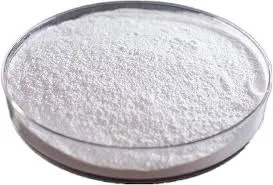
nov . 11, 2024 14:19 Back to list
hydroxypropyl methylcellulose use
The Versatile Uses of Hydroxypropyl Methylcellulose
Hydroxypropyl methylcellulose (HPMC) is a widely utilized, non-ionic cellulose ether derived from cellulose, a natural polymer found in plant cell walls. Due to its unique chemical structure and properties, HPMC has gained popularity across a myriad of industries, including pharmaceuticals, food production, cosmetics, construction, and personal care. This article will explore the various applications of HPMC, highlighting its benefits and versatility in different fields.
Pharmaceutical Applications
One of the most significant uses of HPMC can be found in the pharmaceutical industry. HPMC is often employed as a coating agent for tablets and capsules. Its ability to form a smooth film enhances the product's appearance and protects the active ingredients from environmental factors such as moisture and light. Furthermore, HPMC can control the release rate of the drug, which is crucial in developing sustained-release formulations. By modifying the degree of polymer substitution, manufacturers can tailor the release profiles to suit specific therapeutic needs, ensuring that patients receive a consistent and effective dose over an extended period.
In addition to being a coating agent, HPMC serves as a binder in tablet formulations. It helps to hold the ingredients together, improving the integrity and stability of the final product. Its gel-forming ability in the presence of water aids in drug dissolution, promoting better bioavailability of the active ingredients as they are absorbed into the bloodstream.
Food Industry Applications
The food industry also benefits greatly from the incorporation of HPMC. It is used as a thickening, emulsifying, and stabilizing agent in a variety of food products. Common applications include sauces, dressings, dairy products, baked goods, and frozen foods. HPMC enhances the texture and mouthfeel of these products, providing a desirable consistency while extending shelf life.
One unique feature of HPMC is its ability to form a gel when combined with water, making it an excellent alternative to animal gelatin. This characteristic allows for the creation of vegetarian and vegan food products, expanding their appeal in a market increasingly oriented towards plant-based options. HPMC is also calorie-free, making it a popular choice for low-calorie foods and weight-management products.
hydroxypropyl methylcellulose use

Cosmetics and Personal Care Products
In the cosmetic and personal care industry, HPMC is utilized for its thickening and film-forming properties. It is found in a variety of products such as shampoos, conditioners, lotions, creams, and even makeup. HPMC helps improve the viscosity of formulations, providing the desired texture while enhancing product stability. It also aids in maintaining moisture in skincare formulations, promoting hydration and skin health.
Moreover, HPMC is often used as a gelling agent in hair styling products. It provides hold and structure without leaving a heavy or greasy residue, appealing to consumers looking for lightweight products.
Construction Applications
HPMC has made significant inroads into the construction industry as well. It is frequently incorporated into cement-based products, including mortars, plasters, and tile adhesives. In this context, HPMC acts as a water-retaining agent, allowing for improved workability and extended open time during application. This property is particularly important for ensuring proper bonding and curing of materials in various environmental conditions.
Additionally, HPMC enhances the adhesion of the mortars and ensures that they maintain their moisture levels throughout the curing process, contributing to reduced cracking and improved overall durability of the structures.
Conclusion
The diverse applications of hydroxypropyl methylcellulose underscore its importance across various industries. Its unique combination of properties—such as thickening, emulsifying, binding, and film-forming—makes it an invaluable ingredient in pharmaceuticals, food production, cosmetics, and construction. As consumer preferences continue to evolve toward more sustainable and versatile options, the demand for HPMC is expected to grow. Whether improving drug formulations, enhancing food quality, or fortifying construction materials, HPMC exemplifies how a single compound can significantly impact multiple fields, highlighting the importance of innovative materials in modern applications.
-
The Widespread Application of Redispersible Powder in Construction and Building Materials
NewsMay.16,2025
-
The Widespread Application of Hpmc in the Detergent Industry
NewsMay.16,2025
-
The Main Applications of Hydroxyethyl Cellulose in Paints and Coatings
NewsMay.16,2025
-
Mortar Bonding Agent: the Key to Enhancing the Adhesion Between New and Old Mortar Layers and Between Mortar and Different Substrates
NewsMay.16,2025
-
HPMC: Application as a thickener and excipient
NewsMay.16,2025
-
Hec Cellulose Cellulose: Multi functional dispersants and high-efficiency thickeners
NewsMay.16,2025







